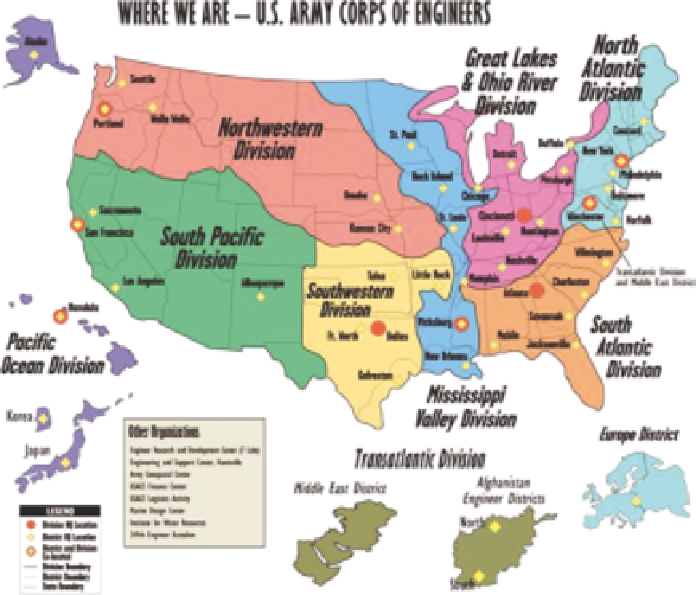Environmental Engineering Reference
In-Depth Information
FIGURE 19.10
U.S. Army Corps of Engineers locations.
Corps developed the 2007
Jurisdictional Determination Form Instructional Guidebook
, which
is widely used to establish jurisdictional procedures, an example of which is illustrated in Figure
19.11. While the Corps is responsible for the process and for making the decision on whether a
particular waterbody is a “water of the United States” (jurisdictional) or not (nonjurisdictional),
the U.S. EPA has the inal authority and is provided an opportunity to agree with, or to reverse,
the decision.
Currently, a number of activities are exempt from 404 requirements. They include, for exam-
ple, normal farming, silviculture (forestry), or ranching practices that are part of an established,
ongoing operation and maintenance of structures, such as dikes, dams, levees, breakwaters, and
causeways.
19.5.2.2 404 Permits
For an activity requiring a permit, there are generally three forms of permits that the Corps may
issue: general permits, letters of permission, and standard individual permits. The general permits
may be regional or nationwide.
Nationwide general permits authorize activities across the country. These general permits are
updated every 5 years following public notice in the
Federal Register
(latest notice in February
2012). The proposal to reissue general permits was published in the
Federal Register
in February
2011 and received approximately 26,600 comments. According to the Corps' “Nationwide
Permit Reissuance” (February 15, 2012), there are currently 49 nationwide permits (two new
ones were added in the revision related to renewable energy) and the nationwide permits annu-
ally authorize about 40,000 reported (to the district ofices) projects as well as about 30,000
projects that do not require reporting to the district ofices. For the reported activities, a precon-
struction notiication to the Corps district is required, while for the nonreporting activities only

Search WWH ::

Custom Search